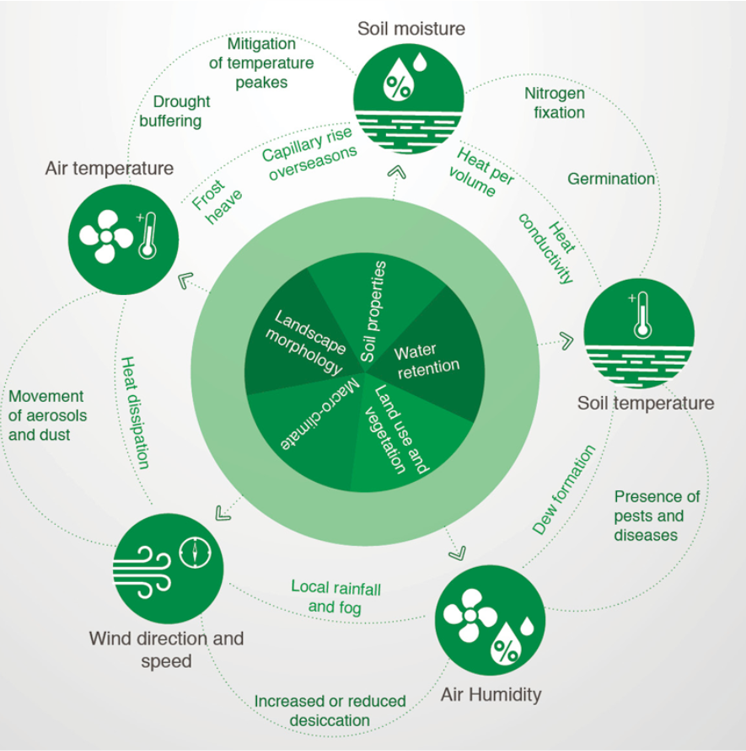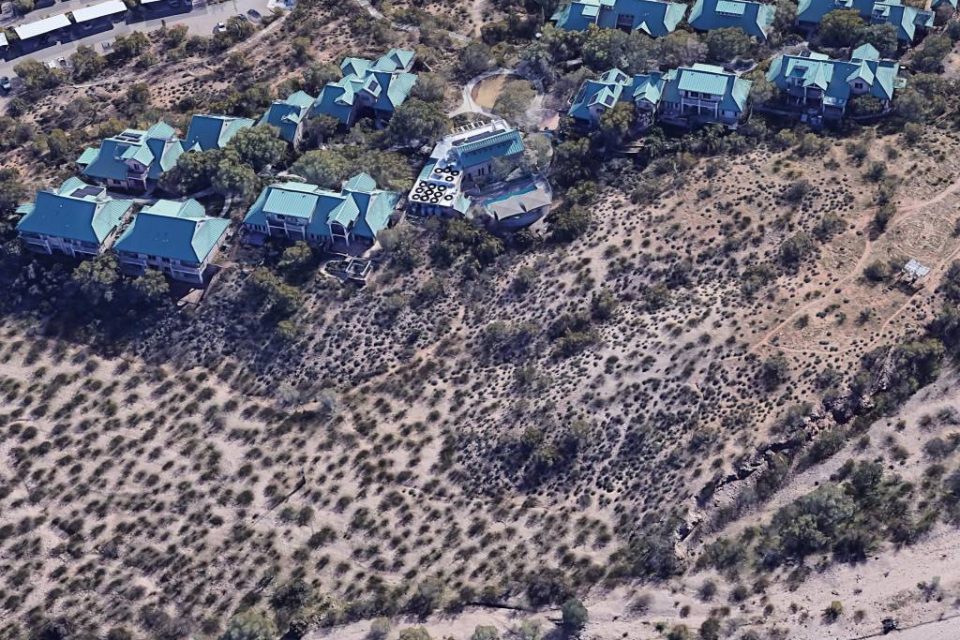When implementing a water resources analysis, it is often tacitly assumed that climate dictates land-use and agricultural potential. But this is not necessarily correct. Irrigation is the prime example of how to improve land potential. A less discussed example is establishing micro-climates that create more favorable growing conditions for plants.
Microclimates are spaces in a landscape where the climate conditions significantly differ from their immediate surroundings. Microclimates occur naturally but can also be created through human design.
Rainfall in the semi-arid and sub-humid tropics represents a substantial resource but is highly unpredictable, with adverse impacts on agricultural production. A substantial portion of rainfall just runs-off or evaporates, and the productive use of rainfall in these climate zones is generally low.
Capturing rainfall on marginal lands, slowing it down, and concentrating it in areas with more favorable soils and terrain is an effective strategy to make better use of rainfall. If this approach is combined with properly spaced perennial vegetation—such as shelterbelts, windbreakers, and scattered field trees—a micro-climate is created with much lower temperatures, higher humidity, lower soil temperatures, and higher soil moisture. These elements combined can create favorable conditions for plant growth. The combination of trees will further control (wind) erosion, and provide shade, fences, fodder, fuel wood, construction wood, fruits, edible leaves, plant nutrients (through nitrogen fixers) and possibly cash income (gum, resin, tannin, etc.). The Sahelian Parkland system is a good example of this approach, but it is noted that many traditional rainfed farming systems in the tropics are concerned with maintaining effective microclimates.

A beautiful example of a man-made microclimate in an arid zone is presented by Brad Lancaster. It concerns the Milagro co-housing community in Arizona (http://milagrocohousing.org).
At Milagro, a housing community established on an exposed ridgeline in a bare arid landscape has created a ‘sheltered canyon’. All rainwater harvested from the roofs is directed to the ‘canyon’ between the houses, where it is concentrated in constructed sunken micro-basins—which are mulched and planted with trees. It has created a lush environment with much lower temperatures and higher humidity. All vegetation is supported by rainwater only; there is no irrigation with water from outside the system.
Moreover, the series of sunken micro-basins has created (accumulatively) an effective storm-water control system. No storm water escapes the system, which is noteworthy since the rain regime in the arid zone is subject to extreme rain events.
